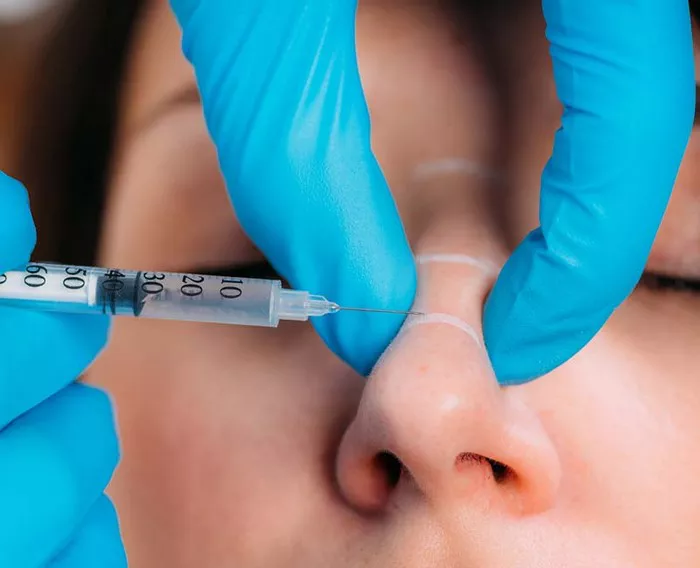Rhinoplasty is a surgical procedure that aims to reshape or reconstruct the nose. It is one of the most commonly performed cosmetic procedures, with a high success rate and low complication rate. However, many people may wonder if getting a rhinoplasty is worth it. This article will explore the factors to consider when deciding if a rhinoplasty is worth it, the potential benefits and drawbacks of the procedure, and the outcomes and risks associated with the surgery.
Factors to Consider
When considering whether a rhinoplasty is worth it, there are several factors to take into account. These include the patient’s goals and expectations, the cost of the procedure, the recovery time and potential downtime, and the potential risks and complications.
Patients should have realistic expectations about the outcome of the procedure and understand that the results may not be immediate or perfect. Patients should also consider the cost of the procedure, which can vary depending on the surgeon’s experience, the complexity of the case, and the location of the practice. Patients should also be aware of the recovery time and potential downtime associated with the procedure, as well as the potential risks and complications.
Benefits of Rhinoplasty
There are several potential benefits of rhinoplasty that may make the procedure worth it for some patients. These benefits include improved self-confidence and self-esteem, improved facial symmetry and balance, and improved nasal breathing and related symptoms.
Rhinoplasty can improve the appearance of the nose and enhance facial harmony, which can boost a patient’s self-confidence and self-esteem. Rhinoplasty can also improve facial symmetry and balance, which can enhance the overall aesthetic of the face.
In addition to improving the appearance of the nose, rhinoplasty can also improve nasal breathing and related symptoms, such as chronic congestion or snoring. Rhinoplasty can correct a deviated septum or other structural abnormalities that may be causing breathing difficulties, improving the patient’s overall quality of life.
Drawbacks of Rhinoplasty
While there are potential benefits of rhinoplasty, there are also potential drawbacks that patients should consider when deciding if the procedure is worth it. These drawbacks include the potential for unsatisfactory results, the potential for complications, and the potential for a lengthy recovery time.
Rhinoplasty is a complex procedure that requires a skilled and experienced surgeon to achieve optimal results. However, even with a skilled surgeon, there is always the potential for unsatisfactory results, such as asymmetry, scarring, or changes in the patient’s sense of smell or taste. Patients should also be aware of the potential for complications, such as bleeding, infection, or anesthesia-related problems.
In addition to the potential for unsatisfactory results or complications, rhinoplasty can also have a lengthy recovery time. Patients may experience swelling, bruising, and discomfort for several weeks after the procedure, and may need to avoid certain activities or wear a splint or cast for several days or weeks.
Outcomes and Risks of Rhinoplasty
Rhinoplasty is generally considered a safe and effective procedure, with a high success rate and low complication rate. Studies have reported that up to 90% of patients are satisfied with the results of their rhinoplasty, with few complications, such as bleeding, infection, and scarring.
However, like any surgery, rhinoplasty does carry some risks and potential complications. The most common complications of rhinoplasty include bleeding, infection, and anesthesia-related complications, such as allergic reactions or respiratory problems. Other potential complications of rhinoplasty include scarring, asymmetry, and changes in the patient’s sense of smell or taste.
To minimize the risk of complications, it is important to choose a qualified and experienced surgeon and to follow all pre- and post-operative instructions carefully. Patients should also inform their surgeon of any medications they are taking, as some medications, such as blood thinners, may need to be temporarily discontinued before the procedure.
Recovery and Follow-up Care
Most patients can return to normal activities within a week after rhinoplasty, although full recovery may take several weeks. Patients may experience some swelling, bruising, and discomfort in the days following the procedure, which can be managed with pain medication and cold compresses.
To promote healing and reduce the risk of complications, patients should avoid blowing their nose or engaging in strenuous activity for several weeks after the procedure. Patients should also keep the nasal passages moist with saline sprays or drops and avoid smoking or exposure to secondhand smoke.
Patients should follow up with their surgeon as directed to monitor their progress and ensure proper healing. In some cases, additional procedures or therapies may be recommended to further improve nasal function and related symptoms.
Conclusion
Deciding if a rhinoplasty is worth it is a personal decision that should be based on the patient’s goals and expectations, the cost of the procedure, the recovery time and potential downtime, and the potential risks and complications. While there are potential benefits of rhinoplasty, such as improved self-confidence and facial harmony, there are also potential drawbacks, such as the potential for unsatisfactory results or complications. Rhinoplasty is generally considered a safe and effective procedure, with a high success rate and low complication rate, but patients should choose a qualified and experienced surgeon and follow all pre- and post-operative instructions carefully to ensure the best possible outcome.

